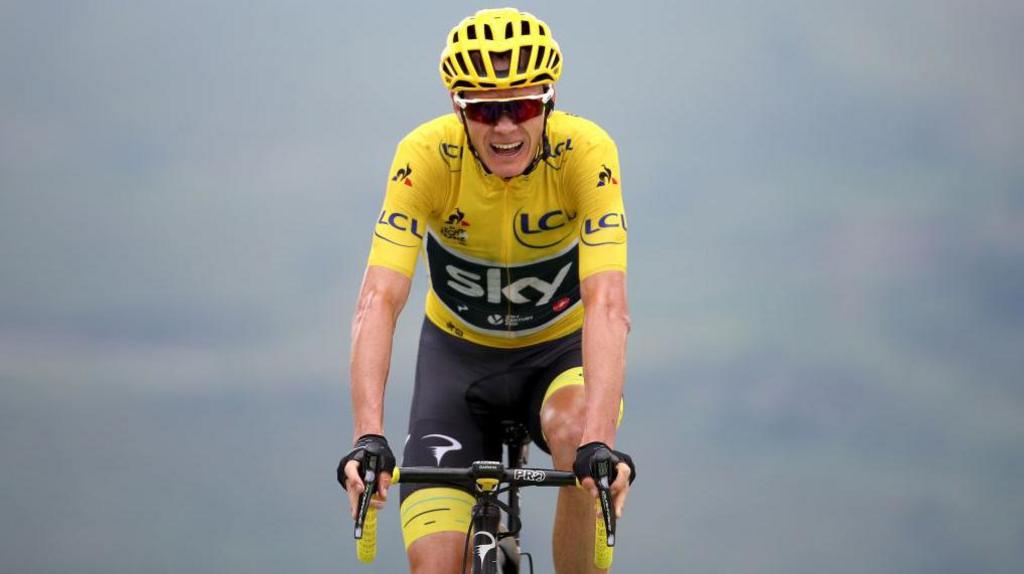Chris Froome’s Shocking Crash: Critical Injuries Revealed
The cycling world collectively held its breath as news broke that four-time Tour de France champion Chris Froome had been airlifted to a Toulon hospital following a devastating training accident in southern France. The incident, which occurred Wednesday near his Monaco residence, has left the 40-year-old icon with severe injuries—casting uncertainty over a career already defying the limits of endurance and resilience.
The Serious Crash: Immediate Aftermath and Injuries
In a harrowing turn of events, Froome lost control during a high-speed coastal descent he’d ridden countless times before. First responders swiftly airlifted him to Centre Hospitalier Intercommunal Toulon-La Seyne-sur-Mer, where scans confirmed the severity of the serious crash: five fractured ribs, a partially collapsed lung, and a fractured lumbar vertebra.
Team Israel-Premier Tech’s medical director, Dr. Roland Richer, described Froome as remarkably composed despite the excruciating injuries. The lumbar fracture requires urgent surgical stabilization, Richer emphasized. Only then can we address the pulmonary complications from his rib trauma. The spinal surgery, scheduled within 24 hours of admission, marks the first phase of a grueling recovery expected to last months.
Froome’s Legacy: A Career Defined by Triumph and Tenacity
This serious crash strikes at a poignant moment for Froome, who’s currently racing his 18th professional season—a farewell tour of sorts before his contract with Israel-Premier Tech concludes. His meteoric rise from Kenyan cycling clubs to Tour de France dominance (2013, 2015–2017) rewrote modern cycling history, complemented by victories at the Vuelta a España and Giro d’Italia.
Froome’s relentless climbing prowess and tactical brilliance revolutionized Grand Tour racing, but his career has been equally shaped by comebacks. The 2019 Dauphiné crash—where he fractured his femur, elbow, and ribs—threatened to end his career, yet he returned to WorldTour racing within two years.
Chris embodies perseverance, said team CEO Sylvan Adams. This accident tragically interrupts his planned farewell events, but health remains our absolute priority.
Unraveling the Crash: Causes and Cycling’s Inherent Risks
Early investigations confirm no vehicles or adverse weather contributed to the serious crash, intensifying speculation about mechanical failure or momentary distraction. The descent itself—a routine part of Froome’s Monaco training routes—highlights cycling’s razor-thin margin for error.
The incident reignites debate about athlete safety protocols. A 2024 Union Cycliste Internationale study found that descents account for 37% of race injuries, while training accidents make up 26% of career-threatening incidents. Froome himself has long advocated for reforms, including mandatory speed governors on race descents and airbag vest integration during training.
Do we accept crashes as inevitable, or innovate to protect riders? asked former rival Alberto Contador. Chris’s accident demands we ask these questions again.
Road to Recovery: Medical Realities and Psychological Fortitude
Orthopedic specialists stress that Froome’s rehabilitation will be exhaustive. The vertebral fracture necessitates months of immobilization to avoid nerve damage, followed by slow reintroduction to movement. His collapsed lung, meanwhile, requires respiratory therapy before endurance training can resume—pushing a potential return to competition beyond 12 weeks.
Yet physical healing is only part of the equation. Sports psychologist Dr. Elisa Conti notes: Consecutive major crashes create invisible scars. At 40, Chris must balance his legendary resilience against the toll of cumulative trauma.
Global Outpouring: The Peloton Stands United
News of the serious crash triggered an immediate wave of support from cycling’s elite. Tour de France director Christian Prudhomme hailed Froome as a defining champion of this century, while rival-turned-commentator Bradley Wiggins tweeted: Heartbroken for Chris. The grit he showed in 2019 proved nothing is impossible for him.
Current stars like Mathieu van der Poel underscored Froome’s cultural impact: He inspired a generation. We’re all willing him through this.
The Path Forward: Legacy in the Balance
As Froome enters surgery, larger questions loom about cycling’s risk-reward calculus and an athlete’s right to define their own exit. Yet those closest to him insist retirement isn’t on his radar. Chris sees challenges as chapters, not conclusions, revealed a team insider.
His journey—from battling parasitic infections (bilharzia) early in his career to dominating mountain passes—reflects a singular capacity to transform adversity into triumph. While this serious crash presents perhaps his steepest climb yet, Froome’s history suggests betting against him remains unwise.
Conclusion: A Sport Holds Its Breath
Chris Froome’s latest ordeal transcends sports headlines—it’s a stark reminder of cycling’s fragile beauty and the athletes who redefine its limits. As the peloton rallies behind him, fans worldwide await the next turn in a story defined by unyielding resolve. One certainty endures: Froome’s legacy, already immortalized in Tour de France lore, will forever be punctuated by his fearless response to the unimaginable.
